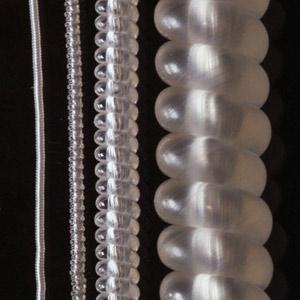Scientists develop artificial muscle from fishing line, thread
By Yoon Min-sikPublished : Feb. 21, 2014 - 20:42
An international team of researchers, including three from South Korea, have created an artificial muscle that is 100 times more powerful than human ones by using ordinary fishing lines and sewing threads.
The new muscles are produced by twisting and coiling high-strength polymer fiber threads made from polyethylene and nylon. They can be applied in a vast number of fields, including robotics and prosthetic limbs, scientists said. The project, led by the NanoTech Institutes at the University of Texas at Dallas, involved scientists from the United States, Canada, Australia and South Korea. The study appeared in the most recent issue of “Science,” which was published on Friday.
Another amazing feature of the new artificial muscles is that they are cheaper to make than any other types.
The new muscles are produced by twisting and coiling high-strength polymer fiber threads made from polyethylene and nylon. They can be applied in a vast number of fields, including robotics and prosthetic limbs, scientists said. The project, led by the NanoTech Institutes at the University of Texas at Dallas, involved scientists from the United States, Canada, Australia and South Korea. The study appeared in the most recent issue of “Science,” which was published on Friday.
Another amazing feature of the new artificial muscles is that they are cheaper to make than any other types.

“Most of the materials used for artificial muscles have used nanotechnology and are expensive, but this uses cheaper, everyday substances,” said Kim Seon-jeong, one of the three Korean scientists who participated in the project in a telephone interview with The Korea Herald.
Because of this, the new technology has much more commercial potential than existing ones, said Kim who is a professor of biomedical engineering at Hangyang University and as a researcher at its Center for Bio-Artificial Muscle.
They are powered by temperature changes which are produced electronically. The polymer muscles contract when heat is applied to them, generating power 100 times stronger than natural muscles. The muscle goes back to its usual form once the heat source is removed, according to researchers.
The new technology can also be used for making robots more human. “Conventional robots use motors to simulate facial expression and limb movements. But this expands and contracts just like human muscles,” Kim said.
Scientists have attempted to make robots imitate complicated human expressions by using a number of tiny motors, but in vain. Take for example the awkward “smile” displayed by the killer robot in the movie “Terminator 2.”
But the new muscles may help make robot faces more expressive, using muscle fiber made from materials sold in a corner shop.
“It is worth noting that the outcomes of carbon nanotube research could also be realized using very cheap nylon fiber,” said another South Korean co-author Oh Ji-young.
She expressed hopes that the new research will help commercialize the robot technology for application in rapidly aging societies.
By Yoon Min-sik (minsikyoon@heraldcorp.com)








![[KH Explains] Hyundai's full hybrid edge to pay off amid slow transition to pure EVs](http://res.heraldm.com/phpwas/restmb_idxmake.php?idx=644&simg=/content/image/2024/04/18/20240418050645_0.jpg&u=20240419100350)







![[From the Scene] Monks, Buddhists hail return of remains of Buddhas](http://res.heraldm.com/phpwas/restmb_idxmake.php?idx=652&simg=/content/image/2024/04/19/20240419050617_0.jpg&u=20240419175937)

![[KH Explains] Hyundai's full hybrid edge to pay off amid slow transition to pure EVs](http://res.heraldm.com/phpwas/restmb_idxmake.php?idx=652&simg=/content/image/2024/04/18/20240418050645_0.jpg&u=20240419100350)

![[Today’s K-pop] Illit drops debut single remix](http://res.heraldm.com/phpwas/restmb_idxmake.php?idx=642&simg=/content/image/2024/04/19/20240419050612_0.jpg&u=)